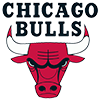Spring training has officially sprung! Even though there are some big-name players conspicuously without a uniform yet, roster deadlines in keeper and dynasty leagues wait for no one, so it's time to get to work figuring out who you're going to protect and who gets kicked to the curb. Over the years I've written a number of columns to help you compile your protected list: how to make basic keeper decisions, how to calculate and handle inflation, how to determine an optimal basic auction strategy, and even a pick value chart for draft leagues.
One topic I've never tackled in depth, though, is how to determine the value of a prospect. Keeper and dynasty championships are built on a foundation of prospects. Winning rosters have a core of cheap stars who came up through the system, often supplemented by more expensive players acquired by trading away other prospects. How do you determine what a prospect is worth in those circumstances?
In truth, the "real" answer is "whatever you can get for them in a trade". Every league's marketplace is different, and will evolve over time and even within a season. A prospect dealt in the preseason will have a different value than he will if he's dealt at the midseason trade deadline, simply due to different market forces being at play. Even beyond that, factors such as league roster depth, or what contracts are assigned to minor leaguers when they lose their minor-league status, can have
Spring training has officially sprung! Even though there are some big-name players conspicuously without a uniform yet, roster deadlines in keeper and dynasty leagues wait for no one, so it's time to get to work figuring out who you're going to protect and who gets kicked to the curb. Over the years I've written a number of columns to help you compile your protected list: how to make basic keeper decisions, how to calculate and handle inflation, how to determine an optimal basic auction strategy, and even a pick value chart for draft leagues.
One topic I've never tackled in depth, though, is how to determine the value of a prospect. Keeper and dynasty championships are built on a foundation of prospects. Winning rosters have a core of cheap stars who came up through the system, often supplemented by more expensive players acquired by trading away other prospects. How do you determine what a prospect is worth in those circumstances?
In truth, the "real" answer is "whatever you can get for them in a trade". Every league's marketplace is different, and will evolve over time and even within a season. A prospect dealt in the preseason will have a different value than he will if he's dealt at the midseason trade deadline, simply due to different market forces being at play. Even beyond that, factors such as league roster depth, or what contracts are assigned to minor leaguers when they lose their minor-league status, can have a huge impact on how valuable those minor-leaguers are as trade assets.
Keeper vs. Dynasty
The first thing you need to understand is the difference between keeper and dynasty formats. Generally speaking, keeper leagues are those that use some form of contract system to determine how long you can have a player on your roster – once their contract expires, they become free agents and go back into the pool for the next draft/auction. In dynasty leagues, the player is yours until you decide you don't want him any more.
Of course, within those two rough descriptions are a thousand variations. A keeper league with contracts and freeze limits so team-friendly you can keep three-quarters of your roster for a decade is really just a dynasty league by another name, while a so-called dynasty league with a tight salary cap could end up operating more like a traditional keeper league.
Nonetheless, the practical difference is how often your roster turns over. Frequent roster churn forces a fantasy GM to focus more on the short term, while the ability to keep a large core together gives you more flexibility when it comes to making long-term plans. Neither format is inherently better or worse than the other. They simply require different approaches.
When it comes to prospect value, the longer you're potentially able to hang onto a player, the more he's worth to you as a prospect. Only being able to keep a player for the first 3-5 years of his career – the typical length of a roto contract in keeper leagues, from initial season through the end of their contract extension – usually means missing out on some of their prime seasons if they pan out, a concern dynasty league GMs don't share. In the former sort of league, an elite prospect like Ronald Acuna or Vladimir Guerrero Jr. still has tremendous value, but it pales in comparison to the total value they could bring a dynasty league roster over the next 10-12 years. That ratio scales, too. Lesser prospects (Cavan Biggio or Cristian Pache, to pick examples from the same systems as Acuna and Vladito) have a lower ceiling and/or more risk of never developing into a useful fantasy asset, but the longer window in a dynasty format gives them more chances to pan out, increasing their potential value.
When it comes to trade talks, then, if an elite prospect like Guerrero Jr. should be treated like gold in a keeper league, they're diamonds in a dynasty league.
League Depth
Prospect value is also affected greatly by how deep the league is. This isn't just about how many franchises are in the league, but roster and protected list sizes as well.
For instance: I'm in a 12-team AL-only league that allows us to protect 14 players going into the auction, but no more than three of them can qualify for a minor-league spot. That means at most 36 prospects can be protected pre-auction (and often it's less than that, as teams devote more of their keeper spots to big-league keepers). In such an enviroment, there's little preseason value in a prospect who is nowhere near the majors and barely creeps into the AL's top 50, such as Brendan McKay. In fact, it's usually better to protect someone who's at least on the cusp of the majors, and could end up having value this season, even if they have little pedigree as a prospect – Niko Goodrum would have been an example of such a player last season.
On the other hand, the Staff Keeper Leagues here at RotoWire are 18-team mixed, with minor-league systems of up to 10 players – all of which can be protected heading into the auction and reserve draft. That puts essentially every top 200 prospect in play (yes, the total is 180, but there's little difference between prospects ranked in the 175-200 range on any list, and personal preference comes into play at that point.) In that format, McKay (RW's No. 81 prospect) is suddenly a valuable commodity in trade talks.
Player Contract/Round Value
A prospect's contract, or round value in draft leagues, is also a big driver of their value. This may seem obvious, but there are wrinkles you may not have considered.
First off – does their contract start running from the moment they're drafted, or from the time they lose their rookie status/get activated to your active roster? If it's the former, suddenly it's extremely risky to draft a prospect projected to be two or three years away from the majors. How much value can they have in a trade, if the other GM is forced to decide whether or not to give them a long-term extension before they've even established themselves as a major leaguer?
Second – what's their salary going to be? This ties in to the next section, Player Ceiling, but a player needs to be able to at least break even, if not turn a profit, at whatever salary they'll have. A small salary makes this an easy bar to clear, but in leagues where salary is tied to when a prospect is drafted, or based on FAAB bidding, there's little point in stashing a prospect if their eventual salary is more than you'd be willing to pay for them if they were available in the auction. No one's going to bat an eye at acquiring Vladito even if he has a future $12 salary attached to him – if you believe the Albert Pujols/Miguel Cabrera comps, he could be consistently earning three times that soon enough. On the other hand, if you're still stashing Nick Gordon at $12, ask yourself what kind of numbers he would need to produce to earn that salary, and how likely it seems at this point he produces them at any point in his career.
Player Ceiling
This is arguably the most important consideration of the bunch, or at least the one that ties everything together. The shallower the league, the more you need to focus on high-ceiling prospects, and the less valuable future roster fillers become. Guys labeled as future back-of-the-rotation starters, or infielders with limited offensive impact, become more valuable the less fungible they seem to be, and the further from replacement level they are projected to be.
Consider two pitching prospects ranked next to each other at the moment: Adonis Medina and Mitch Keller. Medina has an arsenal and big minor-league strikeout rates that suggests he could be a potential ace, but his slight frame and fatigue issues last season are a red flag that he could end up in the bullpen in the majors, or firmly limited to a "twice through the order" role. Keller has no such issues, but his lower strikeout rates and groundball-heavy approach marks him with a mid-rotation ceiling.
In shallow leagues, Keller's value as a prospect is tenuous. Pitchers who can already do what he's projected to do are easy to acquire in the auction, so unless he'll be dirt cheap, what advantage is there to developing one yourself? On the other hand, if Medina proves he can handle a big workload down the road, he could be a fantasy ace, and even if he gets moved to the bullpen, there's always the chance he emerges as a top closer. Keller's chances of being a big-league starting pitcher might be greater, giving him a higher floor, but Medina's chances of being a big-league All-Star seem higher, making him more valuable in shallow formats where solid citizens are near replacement level. The deeper the league, the more Keller's profile gains in value – dynasty league squads need those solid citizens to round out their roster, since the pickings are so slim in free agency, and having too many boom-or-bust prospects like Medina can cause problems down the road if not enough of them click.
League History
When it comes to determining trade value for a prospect, nothing is more instructive than looking at your league's history for prior trades. Every league finds its own level, and establishes its own going rate for a top prospect, whether it's "two stars on expiring contracts for one stud kid" or whatever. Individual deals will be affected by the rosters of the two parties and the actual talent they have, but looking at all the league's trade activity in aggregate should allow you to spot the patterns.
That doesn't mean, of course, that you're beholden to that pattern. A prospect like Guerrero Jr., who gets tagged with labels like "generational talent", is probably worth trying to break the pattern for – if the rest of your league decides you want too much, the worst-case scenario is you still have Vladito. Shucks darn. Knowing what the "going rate" is allows you to establish a floor in trade talks, as well as indicating when you're pushing the envelope on the ceiling.
Note that "pushing the ceiling" can come in multiple forms. Asking for the moon for Vladito is one such form, but so is asking for an elite-level return for a prospect who may not be quite elite, or for multiple less-than-elite prospects.
Remember, in most situations, talent distribution can be visualized as a pyramid. The best players are few in number at the top of the pyramid, and the lower the talent threshold gets, the volume of players that can meet it increases.
The bottom line when it comes to fantasy prospects: it's league depth that determines where the threshold is – and the higher a prospect is above it, the more valuable they are.




































